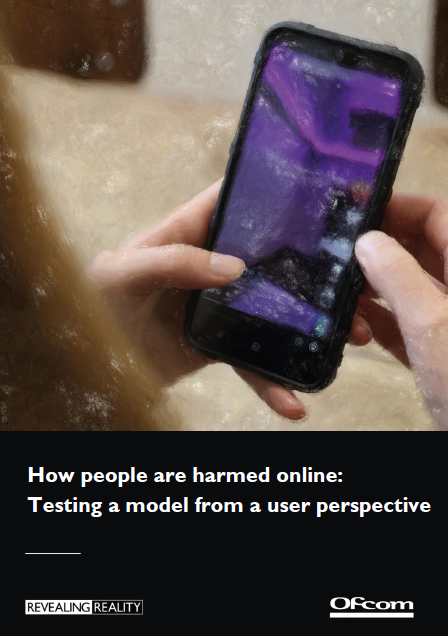Online harm is a complex and nuanced issue.
As Ofcom prepares to take on its role as regulator of the powers to be introduced by the Online Safety Bill, it is developing its evidence base to understand how people are harmed online, what that harm looks like and the impact it can have.
Revealing Reality was really pleased to be commissioned to carry out this research project, working with Ofcom to test and refine the regulator’s theoretical model of how people are harmed online and produce the report How people are harmed online: testing a model from a user’s perspective.
Methodology
This work was based on rich and detailed evidence gathered from qualitative research with 55 online users, the majority of whom were recruited because they self-identified as having experienced harm as a result of online experiences. The respondents also included a smaller control group who reported similar online experiences but didn’t feel they had been harmed.
We’ve seen across many of our research projects exploring online behaviour and online harm that what harms one person online doesn’t necessarily harm another person and that something ostensibly less shocking or horrible sometimes lead to more harm than something that is overtly disturbing.
This project set out to map, consider and compare how people are harmed online, and to describe and categorise the risk factors that made harm more or less likely.
To do this, we built on previous work in which we had tested the applicability of a framework developed for ‘offline’ health and safety to the online realm. This framework draws a distinction between hazards, risks and harms, and explains why harm occurs sometimes but not others.
Not all ‘hazards’ lead to harm
An offline illustration might involve a can of petrol. This is a hazard, but whether it causes harm depends on a range of risk factors, such as how it is stored and who has access to it. Online, hazards most often take the form of content (e.g. images or videos) or contact with another user (e.g. messages or comments). But in the same way, the likelihood that these hazards lead to harm depends on a range of risk factors.
Risk factors influence the likelihood of harm
In this research, based on in-depth interviews, the risk factors were found to relate to the user – their characteristics, circumstances and degree of exposure; and a series of wider factors that affect user experiences online, including the societal context, the characteristics of the platform they were using, and the behaviour of other platform users. These risk factors affected the likelihood of exposure to hazards and/or of harm itself.
Cumulative experiences online often caused more severe harm than one-off shocks
Though some people reported harm after being exposed to a single piece of content or a one-off message, significantly this research found that the most severe, longest-lasting harm was often as a result of cumulative experiences that were less immediately obviously shocking or horrible but built up over time, often without the user noticing until some time later.
In some cases, these cumulative experiences initially felt ‘good’ to the user, for example they felt they were receiving support for a mental health problem from a particular online community, but over time, as they were served more of this content, it reinforced or strengthened negative beliefs or behaviours.
Based on the experience of real online users, this report sets out the ways harm can come about, identifies some risk factors that make it more likely and illustrates how complex online harm can be.

